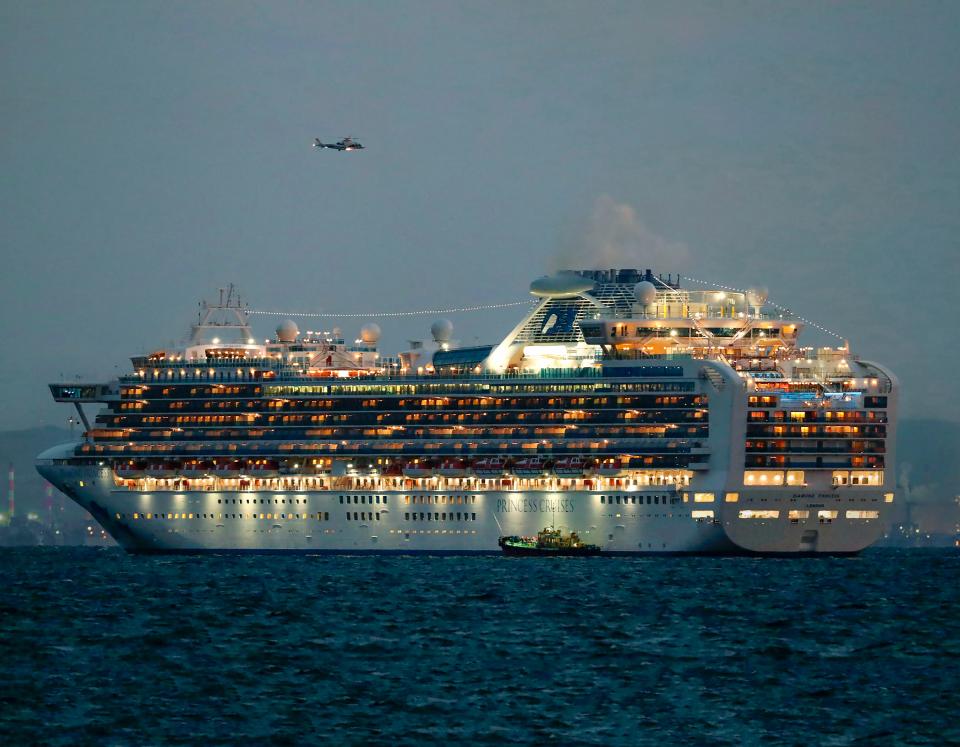Goddamn, the Coronavirus Pandemic Could Last an Entire Two Years
As of Friday, the state of Texas is open for business again. Governor Greg Abbott held firm to the end-date for his lockdown order meant to slow the spread of coronavirus, allowing retail stores, malls, restaurants, movie theaters, libraries, and museums to open—albeit with limited capacity—joining grocery stores, gas stations, and other essential services. While the White House's own guidelines instruct states to wait until they had 14 consecutive days of decreasing number of new cases, Texas hasn't hit that benchmark. The state actually saw it's biggest single day jump in deaths on Thursday, the day before the lockdown ended, recording 50 deaths and bringing Texas's total death toll to 104, according to the Dallas Morning News.
In fact, no states have hit that 14-day decline, yet many Republican-led states are re-opening anyway. Georgia governor Brian Kemp even ordered hair salons, tattoo parlors, and other so-called "high touch" businesses back open last Friday, a move so reckless even Donald Trump—who's in a hurry himself to push workers back to their jobs—called it a bad idea. And in Iowa, governor Kim Reynolds told residents that refusing to go back to work would count as a "voluntary quit," meaning it would bar them from unemployment benefits.
But a new report shows that these officials might be far too optimistic. Researchers at the Center for Infectious Disease Research and Policy (CIDRP) at the University of Minnesota have found that the coronavirus pandemic could last 18 months to two years, only ebbing once two-thirds of the world population has developed immunity to the virus—even taking into account a vaccine, which would likely not be available until 2021 at the earliest. The report was authored by the center's director Michael Osterholm and medical director Kristen Moore, Tulane University public health historian John Barry, and Harvard School of Public Health epidemiologist Marc Lipsitch, and they base their assessment on how easily coronavirus spreads.
The virus is more infectious than the flu, and due to a longer incubation period and more asymptomatic spread (meaning people who never appear ill can infect other people). Also worryingly, the researchers believe that people fall ill with coronavirus might be at their most infectious before they ever show symptoms. Taking that into account, the researchers predict three distinct possibilities for how the pandemic plays out in the next couple of years. The first is a steady stream of "peaks and valleys," with spikes in infections and deaths appearing every few months and requiring sporadic lockdowns. The second, and worst, possibility is based on models from the 1918 pandemic, and would see a massive spike coming this fall or winter—one that would likely overwhelm hospitals and dwarf what we've experienced so far. The third possibility is a "slow burn," which would see occasional flare-ups that are neither as dramatic or as frequent as the "peaks and valleys" model. Unfortunately, this is the least likely outcome. While the "slow burn" model remains a possibility for COVID-19, the pattern hasn't appeared in past influenza pandemics. "Whichever scenario the pandemic follows (assuming at least some level of ongoing mitigation measures)," write the authors, "we must be prepared for at least another 18 to 24 months of significant COVID-19 activity, with hot spots popping up periodically in diverse geographic areas."
The CIDRP researchers warn that public figures need to do a better job communicating the possibility of a prolonged pandemic and "should plan for the worst case scenario." But many states, regardless of which political party is in control, have their stay-at-home orders expiring as soon as May. Some might plan to extend them, as Michigan did this week, as many times as necessary, but that has perhaps created the false impression that the worst will be over soon. Social isolation can be emotionally and psychologically difficult, and uncertainty about income is heavy in a country without a strong social safety net, but constantly delaying a return to normal instead of preparing for the long haul is also taxing. In the CIDRP report, the researchers write, "Risk communication messaging from government officials should incorporate the concept that this pandemic will not be over soon and that people need to be prepared for possible periodic resurgences of disease over the next two years."
Unfortunately, that isn't the message being delivered by either state or federal politicians. After President Donald Trump has repeatedly assured the public that the outbreak would disappear soon, his son-in-law and White House adviser Jared Kushner declared the U.S. response "a great success story," and told the hosts of Fox & Friends that "the hope is that by July the country’s really rocking again." This week, the U.S. passed 1 million confirmed cases and 63,000 deaths. In Brooklyn, one funeral home was so overwhelmed after a freezer broke down that it stored dozens of decomposing bodies in a rented U-Haul truck. And in Florida, state officials have ordered medical examiners to stop releasing the numbers of deaths from COVID-19.
At the start of the coronavirus outbreak, one ill-fated cruise ship became a symbol for the panic and confusion that would soon engulf the globe. Doug Bock Clark uncovers what two harrowing weeks trapped aboard the ocean liner felt like—for unsuspecting tourists, for frightened crew members, even for the captain himself.
Originally Appeared on GQ


